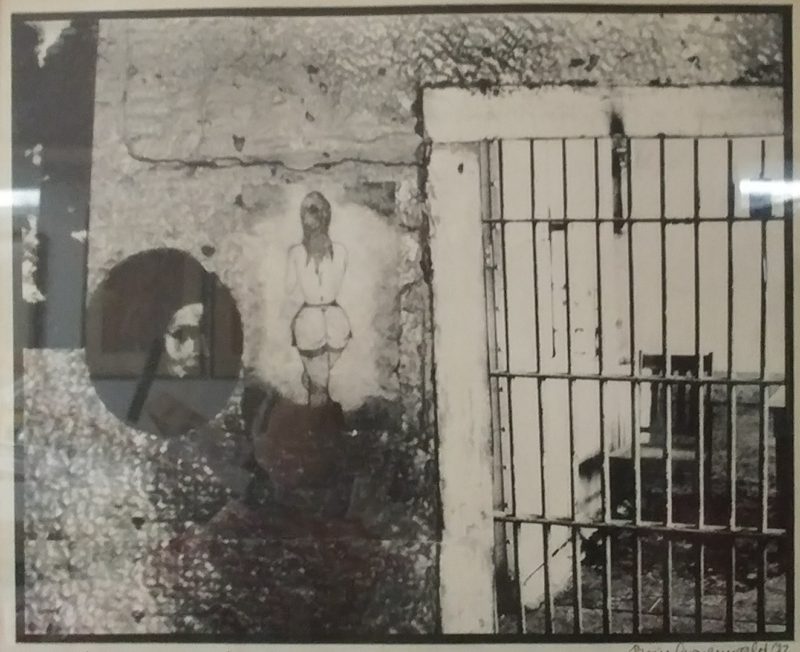CRASH COURSE ON CRIMINAL JUSTICE
by Jim Palombo
Politics Editor
As a criminologist, and particularly given contemporary concerns, people often ask me questions about our criminal justice systems. Given the expanse of the information available as well as the lack of clarity on the specifics involved it’s often difficult to respond adequately. So it seemed a good moment to provide a review of the significant “crime variables” on the table – in essence providing a frame for more informed, public inquiry and dialogue.
In the course of my classroom and civic discussions I’ve found that the best way to initiate a more complete grasp of the issues at hand (as well as to help individuals best position their questions and comments) is to present a general overview of the salient aspects, the nuts and bolts so to speak, related to criminal justice study. In this context it’s proven useful to reference what I term the basic 10 C’s. These are: CRIMINALS, COPS, COURTS and CORRECTIONS; the influences of CASH, COLOR, CLASS and the natures of CAPITALISM, CONSTITUTIONALITY and CONSTRUCT. So let’s turn to a review accordingly.
In terms of CRIMINALS a valuable “broad brush” starting point is to consider the actual motivations for criminal behavior. In this context it’s helpful to put the motivating factors into the categories of biology (is there some genetic predisposition, say in the form of a specific aggressive or emotive gene type, that pushed one toward deviant behavior?), sociology (is there a social circumstance, say in the form of poverty or abusive family, that has contributed to the behavior?) and psychology (is there a mental state, perhaps formed from a mix of particular biological and sociological conditions, that has fueled behavior?).
One might recognize that these categorical references apply to all types of behavior (criminal or otherwise) and that this implies a complex road toward understanding, one that should involve interdisciplinary efforts. And it is not hard to also recognize that there are policy implications and corresponding concerns tied to each discipline. In other words if we proceed with biological considerations the policies that follow would speak to tinkering with the genetic and/or physical nature of beings; if sociology, then significant altering of social environments would be the focus; and if psychology, then changing individual mental processes would be central.
Much like criminal behavior, the COPS category includes a host of considerations. Here again a good starting point might be an inquiry regarding the personal characteristics of those who pursue a career in law enforcement. In short what makes a cop want to be a cop? This leads into considering what the actual culture of policing might be like, i.e., what is the overall character of any policing agency? (One can consider this examination similar to the study of criminal gang culture.) And there are also considerations tied to the law and police behavior – like those linked to the rights and practices of policing agencies in terms of their use of power, search and seizure applications, the nature of interrogations, etc. And there are also issues related to management strategies that develop as policing agencies attend to their often-conflicting responsibilities that bridge law enforcement responsibilities and what communities anticipate in terms of their rights as citizens.
The COURTS represent the coming together of the interaction between criminals and cops and they act as the conduit to the correctional arena. Here again there are a number of issues that include: examining the effectiveness of having an adversarial system (does it work and what are alternatives?); a consideration of the notions of a presumption of innocence and the nature of due process (to what extent are these actualized?); reviewing the power that exists in any district attorney’s office (to what extent does the DA represent both judge and jury, particularly related to plea bargaining process?); and the impact of sentencing structures imposed by legislative bodies (what type sentencing schemes work best for the courts in terms of justice and controlling criminal behavior?).
And then there is CORRECTIONS, in essence presenting concerns related to how any jurisdiction responds to criminality i.e. what behavior is it that the public wants to “correct” and what methods work best in regard to any legitimate, punitive response? Here the principles tied to deterrence (preventing current and future criminality through public response), incapacitation (removing the criminals from society), retribution (exacting some form of public revenge), rehabilitation (providing the means for individual reformation) are important to consider. Additionally concerns arise as to the rates and costs of incarceration, the value of privatizing pieces of the system and even with the potential use of corporal punishment as an alternative, inexpensive yet still swift and certain method of responding to criminal behavior.
(In the context of “corrections” it’s important to note that our existing form of punishment hinges on the “Deprivation of Liberty” principle. In short, and in various stages, it’s this method that we employ to both punish and alter criminal behavior. For general purposes consider this “deprivation” in terms of the varying liberty restrictions tied to community corrections, then jail confinement, then to short and long term prison incarceration, then to variations of solitary confinement and then to the death penalty, with each step representing a more serious stage of deprivation. It’s also important to note the potential effectiveness of this punishment method, particularly in terms of asking if the value of liberty, especially in losing it, is the same across social status lines. In other words, and particularly with the poor in mind – who happen to be significantly over-represented in the correctional arena — to what extent will this type punishment work for those who may well place a lower value on liberty than others?)
Of course, and much like other systems, one would be remiss in discussing a criminal justice system without referencing the influences of CASH, COLOR and CLASS. In other words, either through data accumulation or simple eye-count, it’s clear that these variables have an impact across the system. This is evident whether examining the characteristics of criminals, the interaction of police with criminals, those who are adjudicated within the courts, and those who most often end-up in the correctional arena and who get the more severe sentences within it. (Obviously these same variables have a continuing impact on those who return to problematic environments post release from “correctional” settings.)
Within the context of CAPITALISM, it’s important to clarify that we do live in the most advanced capitalist system in the world. This means that to consider any behavior in our society all the definitions related to capitalism must also be considered. In this general sense there are the “open, free market” definitions — where profit and competition are most beneficial and feed into a productive social system, which tends to foster corresponding productive behavior. And then there are the more critical definitions — where profit and competitiveness are seen to continually benefit the rich over others, creating various levels of inequality, which in turn effects a variety of behaviors.
Simultaneously cultural instincts tied to money, consumerism, success, greed get promoted, and these instincts tend to effect/fuel motivations for behavior, deviant and otherwise. Of course depending on which type definition might be employed it becomes important to then examine how to address particular behaviors like crime. (For example, if capitalism helps induce certain behavior then do we need to alter its course in order to alter anti-social behaviors within that system?)
And there is CONSTITUTIONALITY, which can be seen as the interface of societal realities/practicalities and the principles/ideals of constitutional democracy. In this context we have concerns tied to individual and societal rights, questions as to fairness and justice, the nature of Supreme Court politics, and the sorting through of issues that affect the courts, policing agencies and the correctional arena. As the varying interpretations of the law imply this is a most complex and far reaching piece of the system. And again it’s important to note the added difficulties inherent as democratic ideals play out against the realities of everyday life.
The final C, CONSTRUCT, refers to the political constructs that lie beyond the actual criminal justice systems yet still remain closely tied to the essence of what happens within them. In this context it’s necessary to consider the legislative processes and public policies both on state and national levels related to liberal, conservative and alternate political views. In this sense each political platform suggests an interpretation of the mixes and matches of democratic and market related concerns, including those related to the nature of the social contract and the notions of public versus individual responsibility.
These platforms in turn suggest, among other things, in what manner criminal justice systems should develop (for example, are they intended to punish or rehabilitate?) and what type methods, laws and strategies must be supported to best facilitate intended effects. A most revealing historical reference in this macro-level regard is what unfolded in the Civil Rights Movement era and the War on Poverty, both of which brought to light the varying logics of the liberal, conservative and alternative points of view. (One can also review my article available in the Ragazine.cc archives – Primer for the Primaries.)
So there you have it. Again a lot to think about, especially when you add the significant amounts of data, research material and the historical references tied to all the elements noted above. This being said, I certainly hope the review adds some clarity to discussions that might ensue. And as always, feel free to email me with questions and comments that may develop – I’ll be happy to respond accordingly.
About the author:
Jim Palombo is Politics Editor of Ragazine.CC. You can read more about him in About Us.


Recent Comments